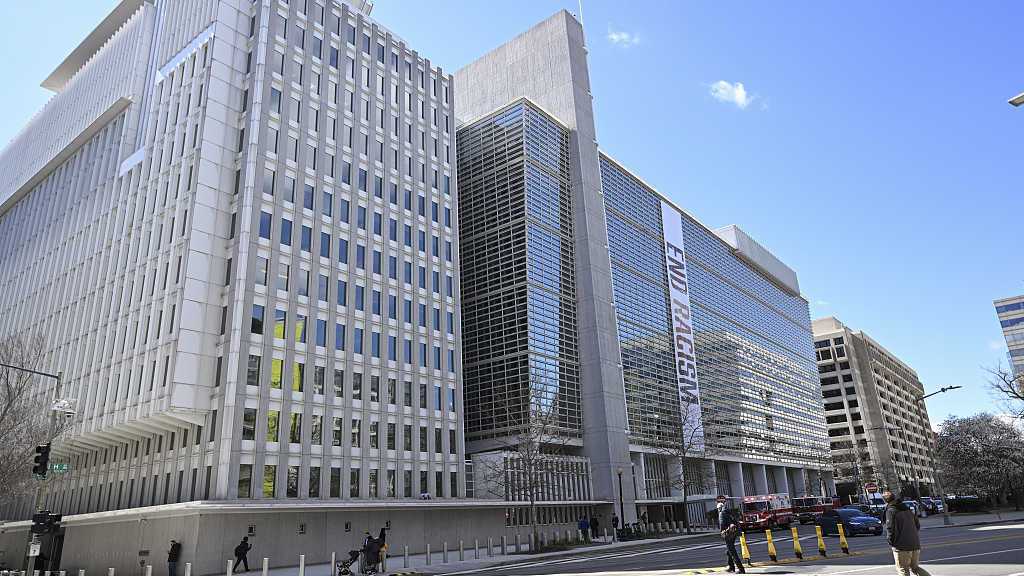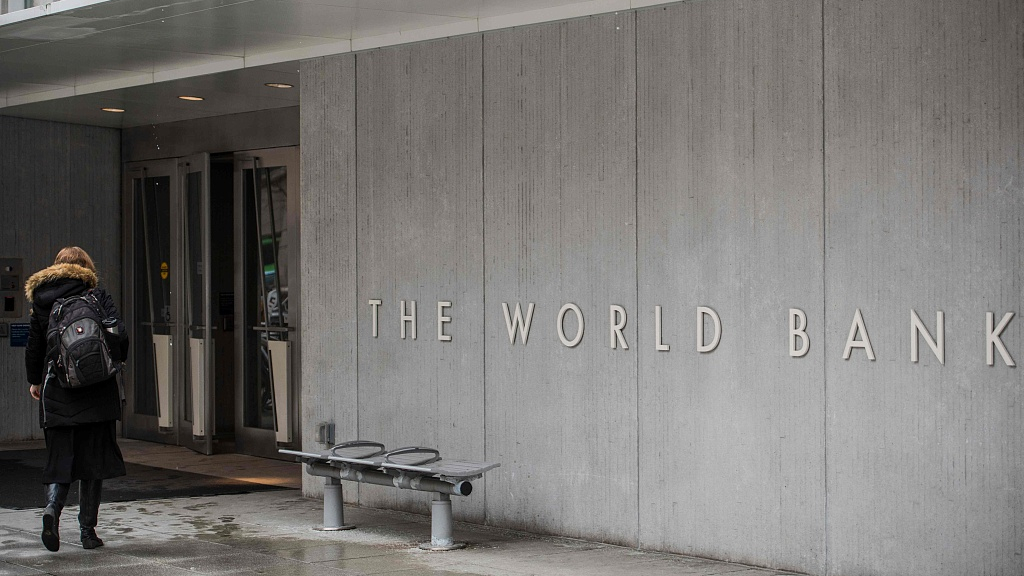
The World Bank building in Washington, D.C., the United States, March 14, 2023. /VCG
The World Bank building in Washington, D.C., the United States, March 14, 2023. /VCG
Editor's note: Andres Velasco is a former presidential candidate and finance minister of Chile, and the Dean of the School of Public Policy at the London School of Economics and Political Science. The article reflects the author's opinions and not necessarily those of CGTN.
Banks can fail, and often do. Yet whenever this happens, we act surprised. Worse, we look for villains and guilty parties, even when there are none. Risk-loving speculators, greedy investors, regulators asleep at the wheel: someone must be the bad guy. But quenching our thirst for moral adjudication is a poor basis for policy.
The truth is both simpler and more troubling. Banks are peculiar institutions. They take deposits that can be withdrawn at a moment's notice and invest in loans and bonds that cannot be redeemed with the same speed, at least not without substantial losses. And what a socially valuable mechanism this "maturity transformation" is: it gives entrepreneurs access to long-term loans that are cheaper than the alternatives, because they are funded with demand deposits that pay no interest.
So, banks are vulnerable by design, not by mistake. No bank is meant to have enough cash in the vault to satisfy the demands of all depositors. Every bank – however conservative its managers and prudent its lending practices – can go under if its depositors decide to withdraw their funds simultaneously.
Silicon Valley Bank (SVB) was neither conservative nor prudent, but in the absence of a run on its deposits, it did not have to crash. True, the spike in market interest rates generated large accounting losses on the bank's portfolio of long-term bonds. But that maturity mismatch – noted ad nauseam by pundits of all stripes – is the bread and butter of a bank's business. It need not amount to a death certificate.
Imagine a bank consisting of demand deposits for $100. Suppose, moreover, that the bank uses the money to buy a government bond, paying 1 percent per annum in interest, with the principal to be repaid in two years. If on the first day of the second year the market interest rate rises to 5 percent, any attempt by the bank to sell the bond would yield only $96 (the price at which what the bond will pay in interest constitutes a return of 5 percent). This is the loss that pundits keep talking about.
But it is only a paper loss, because if depositors keep their money in the bank, at the end of the second year the government will repay the $100 plus interest and depositors will recover their funds without a single penny having been lost, while the bank keeps the interest earned as profit. A crisis occurs if and only if depositors panic and demand their money. In that case, the bank must sell the bond, and depositors get only $96, confirming their worst fears.
This all means that banks depend crucially on trust. That is why in the popular imagination bankers need to be stolid, well-groomed types. Think of the mustachioed money-lenders in the game of Monopoly, or George Banks (also sporting facial hair) in Mary Poppins.
Douglas Diamond and Philip Dybvig won the 2022 Nobel Prize in Economics for giving this logic a formal mathematical representation. But policymakers keep making rules that do not address the underlying vulnerability. In the United States, federal deposit insurance came into being in response to the Great Depression, when more than 9,000 banks failed. It covers only deposits of $250,000 or less. This sounds nicely egalitarian. But, in practice, it is fickle large depositors (who run for the exits at the first sign of trouble) that often wreck banks. The across-the-board insurance offered in response to the runs on SVB and Signature should have been in place all along, coupled with stringent regulations designed to prevent abuse.
Likewise, the 2008-09 financial crisis led policymakers to believe that only very large banks are "systemically important." In response to pressure from Donald Trump's administration and industry advocates like SVB's CEO, Greg Becker, in 2018 the U.S. Congress raised the threshold for a bank to be considered "systemically important" from $50 billion in assets to $250 billion. Recent events have shown that this was a mistake. When it failed, SVB had $209 billion, or less than 1 percent of the U.S. banking system's assets, yet the Federal Reserve had to intervene to stem the risk of contagion. Following the Diamond-Dybvig logic, this is to be expected: because all banks are vulnerable by design, even a pin drop can trigger a generalized panic.

The entrance of the World Bank Group in Washington, D.C., the United States, January 17, 2019. /VCG
The entrance of the World Bank Group in Washington, D.C., the United States, January 17, 2019. /VCG
After previous crises, reformers focused on strengthening banks' capital buffers. This is helpful, but it solves the wrong problem. A bank's capital ensures depositors will get their money back when, say, a portion of the loan portfolio goes sour because of a recession or because of lending mistakes. But recall that, by design, bank capital can never be enough to "make depositors whole." A run is a liquidity problem, and bank capital is meant to mitigate solvency problems.
At the core of this conundrum is the question of whether depositors can be relied upon to stay put when turbulence erupts or when market interest rates rise, creating lucrative investment opportunities elsewhere. When the average bank depositor was a pensioner who, on a rainy day, would be reluctant to run to the bank and line up outside, the answer to that question was yes. A "sticky" deposit base made most banks stable, and their profits hefty.
But today, when news travels instantaneously and depositors can withdraw funds via their smartphones, the answer is much less obvious. Moreover, in most parts of the world, bank profits come not so much from the spread between lending and deposit interest rates, but from the provision of services like credit cards, asset management, and even insurance.
Because the conundrum is anything but new, neither are possible solutions to it. Deposits can be made into equity-like claims to a share of bank assets, whatever those assets turn out to be worth – but that destroys the promise of deposits as a simple and stable store of value. Alternatively, banks can be made "narrow," so that all deposits are backed by riskless assets; but that does away with banks' socially useful role as "maturity transformers." These obvious alternatives have never been adopted for good reason: they are socially costly.
Perhaps one day, central bank digital currencies will do away with bank deposits altogether. But that day is nowhere near. Until then, the best hope is broad-based deposit insurance, swift liquidity provision by central banks (in their role as lender of last resort), and stringent regulation. Yet that combination is not foolproof. No one should be surprised or indignant the next time a bank gets into trouble.
Copyright: Project Syndicate, 2023.
(If you want to contribute and have specific expertise, please contact us at opinions@cgtn.com. Follow @thouse_opinions on Twitter to discover the latest commentaries in the CGTN Opinion Section.)